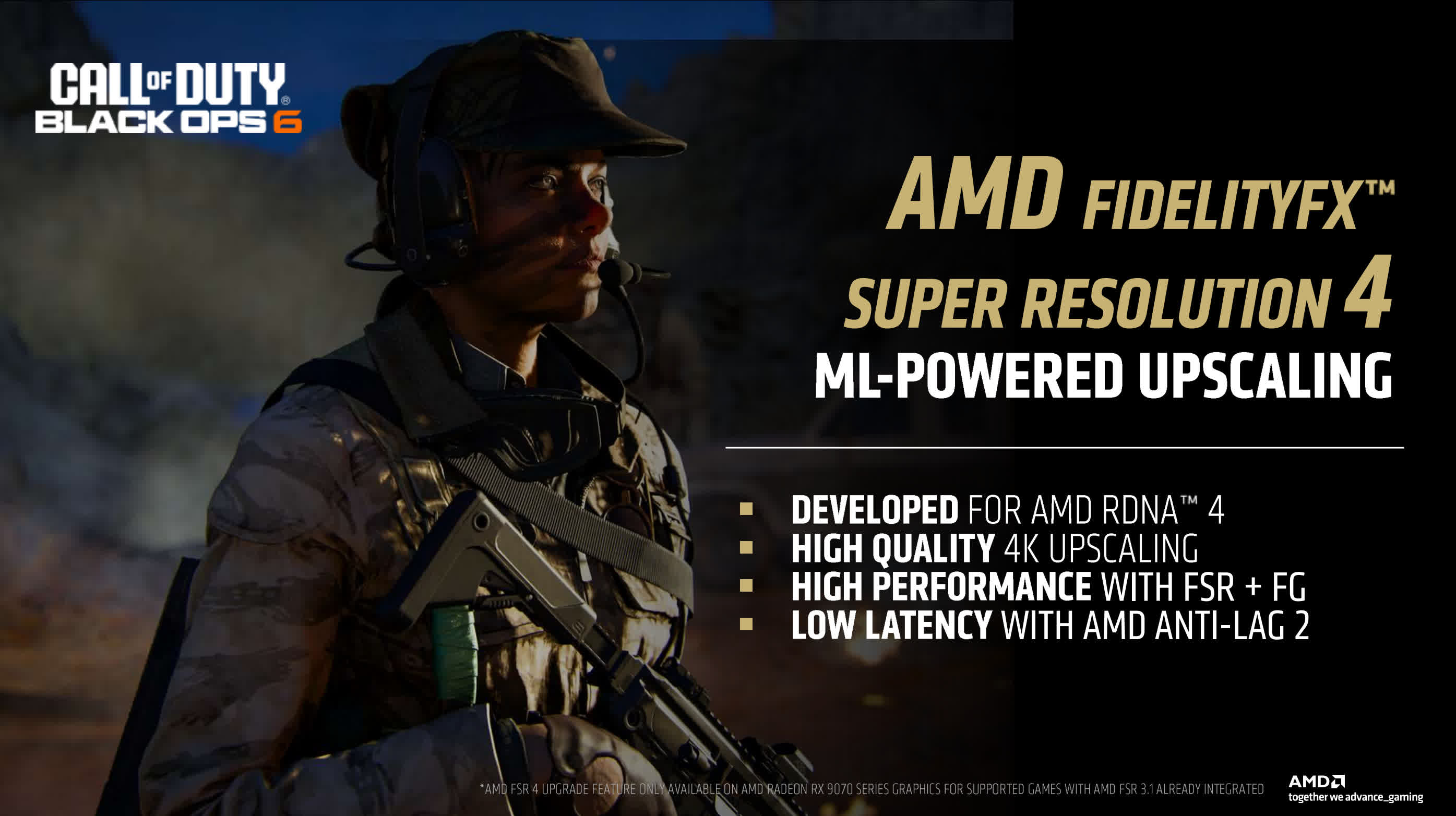In brief: AMD will reveal the tech specs, prices, and release dates for its next-generation Radeon RX 9070 graphics cards later this week, but a fresh leak has outlined the software support for a key feature, FSR 4. Upon launch early next month, the new GPUs will display dozens of games with image quality approaching Nvidia DLSS.

VideoCardz has leaked more information regarding AMD's upcoming Radeon RX 9070 graphics cards. The outlet recently published an allegedly official list of around 35 games supporting the company's FSR 4 upscaling technology upon release in early March.
The new functionality, exclusive to RX 9000 GPUs, marks AMD's adoption of machine learning for image reconstruction. Last month, a CES demonstration (below) showcased substantial improvements over FSR 3.1 in Ratchet & Clank: Rift Apart.
The following games are expected to receive similar image quality improvements starting next month:
- The Alters
- Bellwright
- Call of Duty: Black Ops 6
- Creatures of Ava
- Dragonkin: The Banished
- Endoria: The Last Song
- FragPunk
- Funko Fusion
- God of War: Ragnarok
- Horizon Zero Dawn Remastered
- Horizon Forbidden West
- Hunt: Showdown 1896
- Incursion Red River
- Kristala
- Marvel Rivals
- Marvel's Spider-Man 2
- Marvel's Spider-Man Remastered
- Marvel's Spider-Man: Miles Morales
- MechWarrior 5: Clans
- Monster Hunter Wilds
- Nightingale
- No More Room in Hell 2
- PANICORE
- Predator: Hunting Grounds
- Ratchet & Clank: Rift Apart
- Remnant 2
- Smite 2
- The Axis Unseen
- The Last of Us: Part I
- The Last of Us: Part II Remastered
- Until Dawn
- Warhammer 40,000: Space Marines 2
- Kingdom Come: Deliverance II
- Dynasty Warriors: Origins
- Civilization 7
Additional developers cooperating with AMD on adopting FSR 4 include 11 Bit Studios, Activision, Ballistic Moon, Focus Entertainment, Guerrilla, Insomniac Games, Krafton, Naughty Dog, NetEase, Nixxes, Pearl Abyss, Sager, SEGA, and Torn Banner. AMD claims the number of FSR4-compatible titles will exceed 75 by the end of the year.

However, users can also manually implement the new upscaler in any title supporting FSR 3.1. Therefore, the following games will likely have a manual toggle or officially implement FSR 4 support in the coming months:
- Delta Force: Black Hawk Down
- Like a Dragon: Pirate Yakuza in Hawaii
- Lost Records: Bloom & Rage
- Virtua Fighter 5 R.E.V.O.
- Space Engineers 2
- Ninja Gaiden 2 Black
- Indiana Jones and the Great Circle
- Stalker 2: Heart of Chornobyl
- Microsoft Flight Simulator 2024
- ARK: Survival Ascended
- Farming Simulator 25
- Silent Hill 2
- Final Fantasy XVI
- The First Descendant
- Ghost of Tsushima Director's Cut
- Manor Lords
- The Finals
- Mortal Kombat 1
- Warhammer 40,000: Darktide
- Everspace 2
- Satisfactory
- War Thunder
AMD also provided new information regarding FSR 4's performance presets. Unlike FSR 3.1 and DLSS, Team Red's new upscaler won't include an ultra-performance mode for tripling the resolution scale (for example, from 1280 x 720 to 4K). Performance mode, which scales from half resolution, will be the lowest setting.
Previous leaks from VideoCardz and other sources have revealed the full RX 9070 and 9070 XT specifications. Additionally, early Micro Center listings indicate the 9070 might start at $649.99 and the XT at $699.99. However, whether the numbers represent MSRP or boosted AIB partner prices is unclear.
AMD FSR 4 to support over 30 games at launch, 75 by the end of the year
